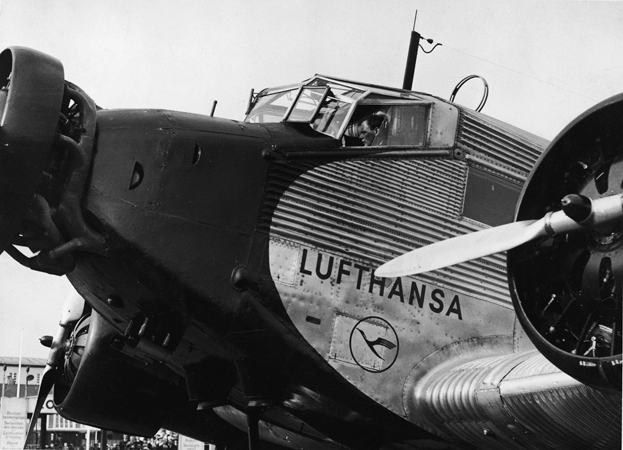
Stranger
than Fiction is the title
of several movies, the last of which was released in 2006 and was about
an auditor suddenly finding himself the subject of narration only he
can hear. Let’s flash now to the real world and the recently published
official minutes of the 2011 IATA CAC (Cargo Agency Conference) and
peruse another sort of fiction that is indeed stranger.
There is a saying that the winners write
the history books; in this case, there are only losers.
IATA has been seeing some self-inflicted
criticism directed at it these last few months. How it manages its routine
affairs (such as its cargo conference) is not a matter subject to high-level
governance, but rather demonstrates how it conducts its core routine
business. The mechanism that governs a conference like the agency conference
was essentially put in place many years ago at a time when most airlines—except
in the U.S.—were government owned, and the unanimous voting procedures
were in tune with the times. IATA was financed entirely by membership
dues in those days.
Fast forward to 2011, when very few airlines
remain in the hands of governments; ownership ranges from corporate
to investment groups that are pure commercial undertakings.
And so is IATA – in this sense,
it has kept up. Where’s the beef?
Well, if you happen to be a forwarder
there might just be a few problems… You may be an accredited IATA
agent, bound by the rules from the olden days.
The CAC manages the airline/agent relationship,
yet the forwarders are not sitting at the table; instead, their interests
are conveyed by means of the IATA/FIATA Consultative Council and in
Europe, the ECAPJC (cargo agency joint council).
While issues of concern may find their
way into the conference agenda, it’s the airline delegates alone
who decide according to the rules. Let’s play the numbers and
assume there are some 10,000 forwarders worldwide. IATA has 230 member
airlines, of which 89 have accredited representatives to the CAC. At
this year’s conference in Istanbul, given the importance of the
airline/forwarder relationship, the delegates were present in force
demonstrating their “commitment” – all 18 of them!
That’s a staggering 20.9 percent of the accredited agency conference
representatives and barely a quorum only by the slimmest of mathematical
margins.
According to the provisions for the conduct
of IATA Traffic Conferences, the voting stipulates that one-fifth of
the representatives of the voting member that have nominated an Accredited
Representative to such Conference, or their respective designated alternates
acting in their place and stead, shall constitute the quorum. Based
on 89 accredited representatives to the CAC, that number turned out
to be 17.8. Whatever these 18 delegates decided binds 230 airlines,
which is evidently OK with the airline membership, but also a whole
lot of forwarders who have no say in the matter yet are directly affected
by the outcome. One can start having some understanding for the forwarders’
point of view and their reaction to the continuation of this inequitable
state of affairs.
Regardless of what takes place in a meeting,
controversial material is carefully edited out and sanitized to suit
institutional interests and what is published, stands. What’s
different here is that as a result, there is no useful record for future
reference in official documentation, which obfuscates more than it clarifies.
Just a few examples:
 A new conference chairman was “duly” elected by vote; the
name of the candidate who ended up being elected doesn’t appear
on the attendance list. Following a more recent tradition, the new chairman
is not an active airline member, although no doubt a highly qualified
and well-respected professional. He is an external consultant paid on
a per diem basis, all permitted under the statutes. It’s actually
rather astonishing that none of the 89 accredited representatives to
this conference, or rather their respective airlines, can find the time
and a delegate with a suitably proficient background to fill this important
role, instead resorting to a retiree. No wonder forwarders see this
as an illustration of both the scant importance accorded the airline/forwarder
relationship by the airlines and the quality of the delegates.
A new conference chairman was “duly” elected by vote; the
name of the candidate who ended up being elected doesn’t appear
on the attendance list. Following a more recent tradition, the new chairman
is not an active airline member, although no doubt a highly qualified
and well-respected professional. He is an external consultant paid on
a per diem basis, all permitted under the statutes. It’s actually
rather astonishing that none of the 89 accredited representatives to
this conference, or rather their respective airlines, can find the time
and a delegate with a suitably proficient background to fill this important
role, instead resorting to a retiree. No wonder forwarders see this
as an illustration of both the scant importance accorded the airline/forwarder
relationship by the airlines and the quality of the delegates.
 The CAC agenda carried a voting item with the intent of conferring equal
footing to training programs, given the termination of the IATA/FIATA
training program. The IATA lawyer present was on record stating that
FIATA was encouraged to develop its own program for dangerous goods.
Old habits die hard as the meeting concluded that mere endorsement by
the national authority was not sufficient to ensure that all agents/intermediaries
were trained at the same high standard unless they meet the IATA Dangerous
Goods Board established criteria. They ended up rejecting the proposal
on the basis that because the FIATA trade name had been placed on a
given training organization, it would be insufficient to ensure that
it had been nationally endorsed or that it had met the IATA criteria
for dangerous goods training. Having agreed to the termination of the
joint training program, IATA reverted to setting standards for another
trade association’s training programs and depending on its endorsement
of such programs. It didn’t mention whether this would not be
free of charge. Imagine the reverse situation!
The CAC agenda carried a voting item with the intent of conferring equal
footing to training programs, given the termination of the IATA/FIATA
training program. The IATA lawyer present was on record stating that
FIATA was encouraged to develop its own program for dangerous goods.
Old habits die hard as the meeting concluded that mere endorsement by
the national authority was not sufficient to ensure that all agents/intermediaries
were trained at the same high standard unless they meet the IATA Dangerous
Goods Board established criteria. They ended up rejecting the proposal
on the basis that because the FIATA trade name had been placed on a
given training organization, it would be insufficient to ensure that
it had been nationally endorsed or that it had met the IATA criteria
for dangerous goods training. Having agreed to the termination of the
joint training program, IATA reverted to setting standards for another
trade association’s training programs and depending on its endorsement
of such programs. It didn’t mention whether this would not be
free of charge. Imagine the reverse situation!
Nitpicking? Forwarders see this is as
routine for how things are handled and their reaction is equally predictable.
In the end, this can be seen as relatively minor stuff, something the
current IATA management could redress independent of changes at the
very top of the organization, but it doesn’t. So why exactly does
IATA deserve a break?
Ted Braun |
